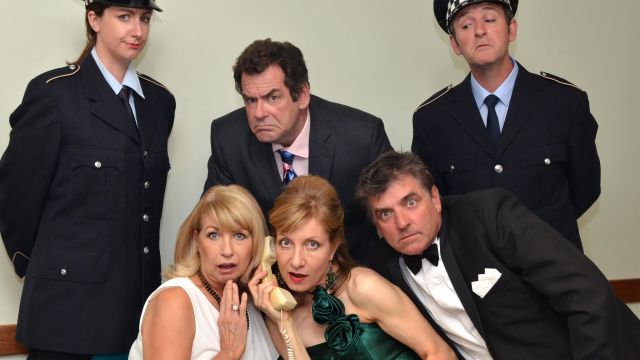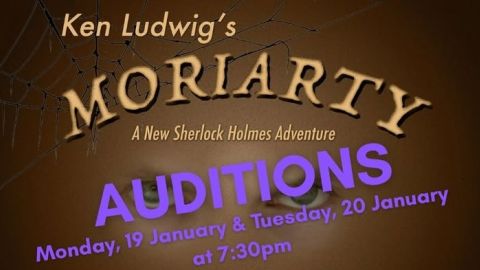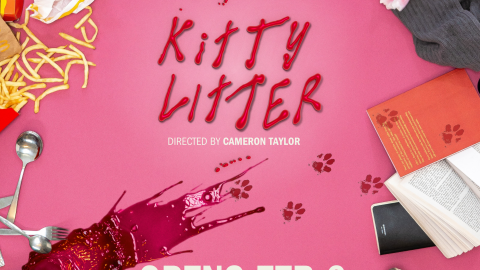Galleon Prescribes Rumours for Laugh Therapy at Its Best
Since 1960 Neil Simon has written an extensive repertoire of plays. Rumours is just one of them, but this farce has particular significance in that it was written as personal therapy in an emotional time for the playwright. Adelaide’s Galleon Theatre Group is staging the play in November and you can bet it’ll be therapy for audiences… in fact, a prescription for laughs. Lesley Reed reports.
It seems incongruous that the funniest of plays had its genesis in turmoil and tragedy, but Neil Simon’s farce Rumours began in just such a way.
''I was going through some difficult times,'' Neil Simon has said. ''This marriage I was in was breaking up. My daughter's husband was killed in an automobile accident. It seemed like rough going. And I said I wanted to work, because work is always a cathartic process for me, and I thought it would be really good just to get into a comedy.''
In November, Galleon Theatre Group is staging that cathartic Neil Simon comedy...but with a difference - it's the English version, hence the spelling of the title - and it's the first time this version has been presented on the Adelaide stage.
And as regular Galleon audiences would know, this production of Rumours is presented by a theatre company that's become expert at staging Neil Simon's work.
In an interview with The New York times in the late 1980’s when the play was first produced, Simon discussed how Rumours was a variation from all previous plays he’d penned.
''This is completely different for me, it's unlike anything I've ever written. It's my first farce,” he said. “A farce is relentless. There are so many more obligations. It's relentless in its needs for plot twists, and to keep the comedy going. I had seen at one point a television show with Peter Shaffer, whom I respect as much as any English-speaking writer, and the moderator was saying to him, 'Why did you write Black Comedy?' And he said, because it was a challenge. It was a farce. And so I thought I'd see how far I could go with this thing, because it deals with a great deal of plot. And I rarely use plot. I use character development. The characters just seem to move to the next place, as life would have them move. But in the plot in a farce, you move them. The writer's in control all the way.''
When, in that New York Times interview, Simon listed the pitfalls of writing farce, it was clear that from the very beginning he had recognised the difficulties involved in this particular theatrical genre.
''The simplest aspect of farce is you need a lot of doors,'' he said. ''And you need people to go running in and out of them, just missing each other. Generally speaking, in a farce, people are trying to withhold information from other people. I've hardly seen a farce in which that didn't happen.''
 It seems the issues with farce begin almost before penning a word!
It seems the issues with farce begin almost before penning a word!
''With a farce,” said Simon, “you have to start right from the top, not even page one, but line one, or you're in trouble. Everybody in the play has to be in trouble. I don't think one could do a leisurely farce. The words seem in opposition to each other. And I found that whenever the characters were not in jeopardy, I had to make just jokes, and the jokes weren't working, because they didn't have any sound basis…And so I had to keep all the characters in jeopardy. I was constantly looking for twists in the development of the plot, and adding more plot. The audience becomes a giant machine that sort of just eats dialogue, and eats plot. They want more and more and more of it. And there's no way you can write all that and make it as funny as you hopefully think it is in one draft, or two drafts. So I was up to, I think, the 10th draft.''
Simon said the only way he could describe writing farce is that it's like an artist doing an abstract painting. ''If you're doing a landscape, you're out there in the country and you know what you're doing - you see the mountains, the trees, the river,'' he said. ''Doing an abstract painting, you can't know exactly what's going to be there. You go by what you feel.”
And so Rumours came to be. It’s a fast-paced and hilarious story of how rumours can steer dangerously close to destroying friendships and relationships. In Simon’s play, eight party guests attempt to spare their host and themselves from scandal and instead find themselves in a hectic and side-splittingly funny cesspool of unlikely events and concocted explanations.
''Dying is easy; comedy is hard,'' is an old theatrical saying that’s particularly true of farce, but in this case it’s not a problem, because Galleon’s cast is an experienced bunch of comedic actors. They include Anita Canala, Linda Lawson, Lindy Le Cornu, Leanne Robinson, Ashleigh Merriel, Peter Davies, David Lockwood, John Koch, Andy Winwood and Andrew Clark.
Rumours is perfect laugh therapy to counter today’s stresses, so get along to the Domain Theatre and check out Galleon Theatre Group’s last show for 2015.
There’s a rumour this production is up to Galleon’s usual fantastic standard…so don’t miss it, whatever you do.
WHEN: Preview Wednesday November 18, 8pm. Season runs Thursday-Saturday November 19-21 and 26-28, 8pm. Matinee November 28, 2pm.
WHERE: Domain Theatre at the Marion Cultural Centre (choice of conventional or cabaret seating)
BOOKINGS/TICKET PRICES: www.galleon.org.au or ring 0437 609 577
More Reading
Subscribe to our E-Newsletter, buy our latest print edition or find a Performing Arts book at Book Nook.






